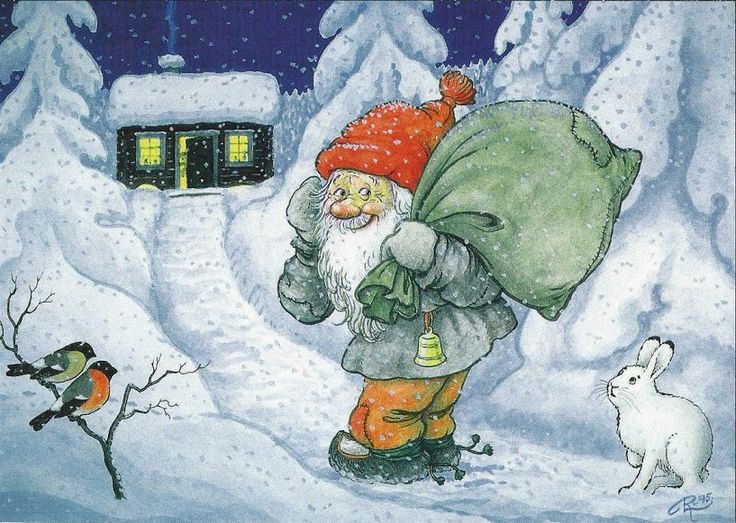Minnesota is the state with the highest number of Scandinavian Americans, boasting a population of about 1,603,124, according to the Stevens History Museum.
This number accounts for over 30 percent of Scandinavian Americans in the U.S.A.
With such a large amount of Scandinavians in our great state, it is no surprise that many of us have become accustomed to some of their holiday traditions.
If you have never heard of these, it is never too late to try something new!
Trying new things has been proven to boost confidence and increase brain activity.
Doing something simple like picking up a holiday tradition may just be the boost you are looking for.
Tradition is something that is unique, and as a growing country, it is our position to learn about those around us.
Unlike the United States, in many Scandinavian countries Christmas is celebrated for much longer than a few days.
Advent calendars are very popular, and some even have hidden chocolates or other candies.
These calendars have the days of Advent on them and can range in styles.
Some of these are becoming more popular in American culture, substituting other items for chocolates, like money or cosmetics.
Because Christmas is celebrated for a longer period of time, there are many more festivities that can be celebrated.
December 13th is a big celebration in many Scandinavian countries because it is the feast day of Saint Lucia.
The Christmas season also comes with many large feasts, which have herring, potatoes, salmon, and many other foods.
Many of these foods are uncommon or not well liked here, but it is always a great idea to go out of your way and try new foods.
Maybe you will love them!
Being that Gustavus is a Swedish college, we also celebrate the feast day of Saint Lucia.
Even though Saint Lucia was from Sicily, she is adored throughout the world.
In a typical celebration, the eldest daughter dresses in a long white gown with a red ribbon tied at her waist.
She wears a crown of fresh greens and lit candles on her head.
Very early in the morning, the children serve coffee and Lussekatter (Lucia buns) to all the people in the house while singing traditional Swedish Saint Lucia songs.
This tradition has changed so that now girls normally wear a crown of greens with electric candles; this prevents accidents and burns from the open flames.
There were actually so many severe burns and problems with having actual candles that this is not very common not just in America but throughout Sweden as well.
The Gustavus version of the Saint Lucia celebration is different, however it still represents what Saint Lucia stands for: faith, hope, prosperity, love, and a reason to believe in good things to come.
Growing up a Minnesotan I admit to being a “stereotypical Minnesotan.”
I love to eat pickled herring, lefse, rosettes, potatoes, and of course hotdish (I am partial to tater tot hotdish but my roommate loves tuna noodle hotdish).
I have grown up eating herring with my mother and I have many fond memories of us cooking and eating meals together.
Unlike the United States, in many Scandinavian countries Christmas is celebrated for much longer than a few days.
My grandmother was born in Sweden, so a lot of these recipes came from her family, which makes making them much more special.
One of my favorite dishes is lefse, which is a potato flatbread.
Normally it is eaten with butter and brown sugar, but I have met many people who eat it other ways.
My mother and I have never made lefse, but I would always love hearing about my friends making lefse with their mothers and grandmothers.
In the future I hope to learn the art of lefse making.
Lefse classes are taught throughout the state of Minnesota, so if you are looking for a new weekend activity you should try it!
One tradition that I look forward to every holiday season is making rosettes, Pepparkakor (ginger spice cookies) and anise cookies with my mother.
Each of the recipes my mother and I make are not easy, which is why we save them for Christmas.
Special occasions call for special baking, but tradition is not only about the food.
I love going out and getting a Christmas tree.
Having an evergreen in the house is very common in celebration of Christmas.
However, hundreds of years ago evergreen trees were placed in the homes of pagans in Scandinavia during the winter solstice.
This was believed to make the spring come sooner.
I love being involved in traditions, every culture has them and we should try and learn more about each of them.
Everyone is unique and has their own fun celebrations.
Every family has their own traditions, and whether they are culturally derived or not, is not as important as spending the time with your family.
Family is very important, especially during the holiday season.
Trying new things can be fun and is a great way to spend more time with those who love you.
Happy Holidays!
